#Goetic Demon
Text
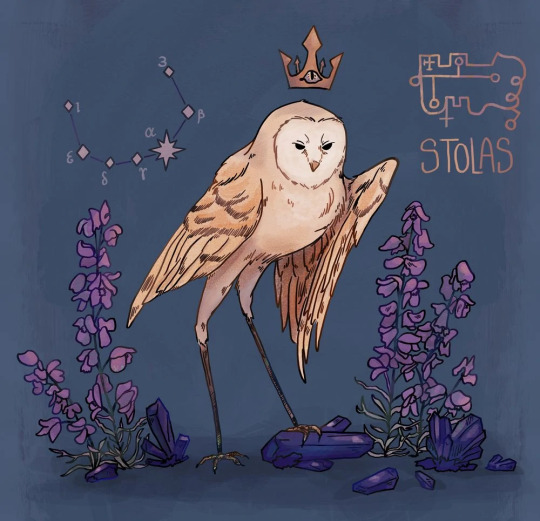
#stolas#prince stolas#real prince stolas#ars goetia#goetia#goetic#goetic demon#demon prince#owl demon#demonolatry#demonology
72 notes
·
View notes
Text

Dressed up for his "Blitzy".
7 notes
·
View notes
Text
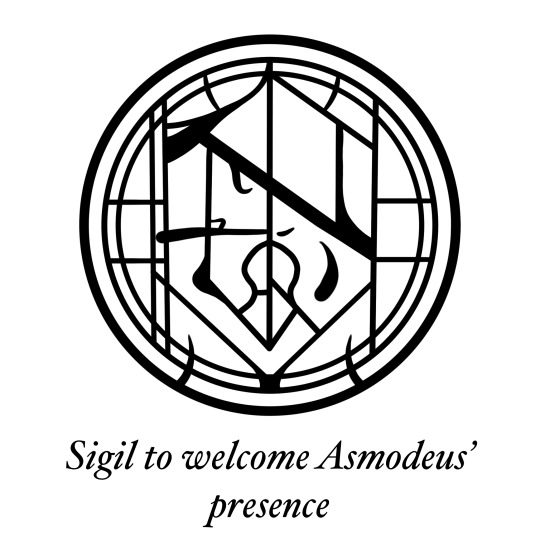
As requested, an AI generated sigil to welcome Asmodeus' presence.
#asmodeus#demonolatry#goetic demon#occult#occultist#religion#witchcraft#sigils#sigil#sigil work#goetic demons#ars goetia#magic#magick#black magick
212 notes
·
View notes
Text

yawning bune
17 notes
·
View notes
Text
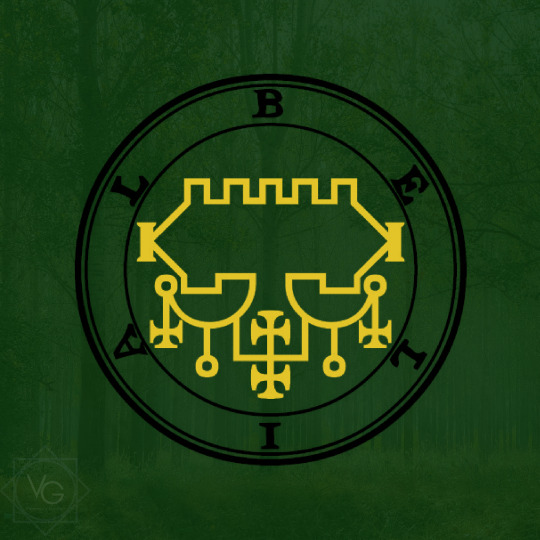
Lirach Tasa Vefa Wehlc Belial
"The sixty-eighth Spirit is Belial. He is a Mighty and a Powerful King, and was created next after LUCIFER. He appeareth in the Form of Two Beatufiul Angels sitting in a Chariot of Fire. he speaketh with a Comely Voice, and declareth that he fell first from among the worthier sort, that were before Michael, and other Heavenly Angels. His Office is to distribute Presentations and Senatorships, etc.; and to cause favour of Friends and of Foes. He giveth excellent Familiars, and governeth 50 Legions of Spirits. Note well that this King Belial must have Offerings, Sacrifices, and Gifts presented unto him by the Exorcist, or else he will not gibe True Answers unto his Demands. But then he tarrieth not one hour in the Truth, unless he be constrained by Divine Power." -Ars Goetia
In the Dukante Hierarchy, Belial is seen as the Earth Elemental Demon, both as Destructive (fiery) Earth, and also a creative manifesting force that can bring wealth and abundance. He is celebrated at the Winter Solstice.
Planet: Sun
Element: Earth, Fire
Direction: North (Dukante)
13 notes
·
View notes
Text
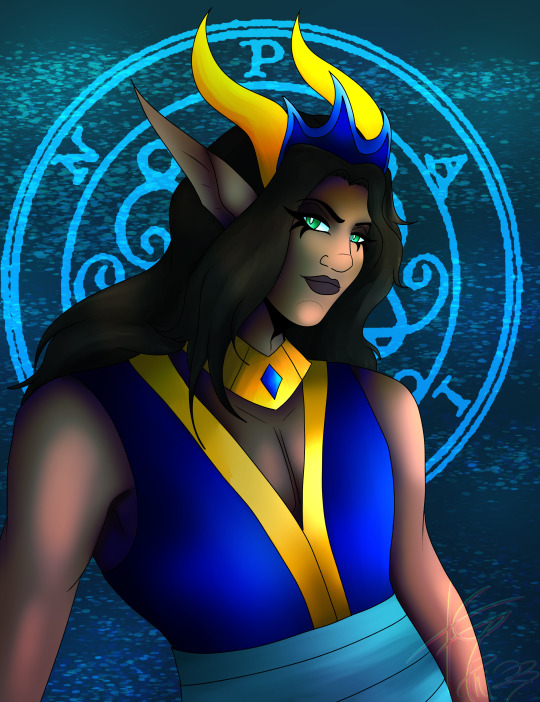
Hail King Paimon,
King of the arts
Divine one of a sweet chime's sound
Lord of the waters which hold domain over emotion
Lord of the ebb and flow,
You teach that one mistake can be transmuted into a success,
Linan Tasa Jeden Paimon!
Ave King Paimon!
14 notes
·
View notes
Text
Hail to the Violet King
Blackened wings and gilded horns
Embracing the self with no remorse
O Glorious king, ruler of all daemons,
Through you, we do what the self needs,
Glorious Asmodeus!
Let me live guilt free!
Forever more!
Ave Asmodeus!
22 notes
·
View notes
Photo

My take on a Goetia OC for Helluva Boss - King Purson, and his viper tail, Ketele.
The older half-brother of Stolas with mastery over lost riches, hidden things and of prophecy. He became a King of the Ars Goetia after eating his father, Paimon due to becoming sick of his ‘parenting’ and usurping his position.
Regards Stolas with mostly casual disdain but admits to respecting his raising of Octavia, whom he rather dotes on - especially considering whatever influence Stella could have, whom Purson regards as an uppity harpy.
Though he finds Stolas to be a ‘cowardly, effete fop’, he is still a Goetia by blood and finds Stella’s abuse an affront to the family honour but restrains himself from having her dealt with for his neice’s sake.
Honestly couldn’t care less about Stolas’ affair with a common imp, as 1) it infuriates Stella and 2) he finds Stolas’ brazenness to be emblematic of what a Goetia should be: to be indulgent in what they want, when they want it.
#art#my art#oc#my oc#helluva boss#helluva boss oc#goetia oc#goetia family#goetic demon#ars goetia#hazbin hotel#vivziepop#helluva boss goetia#purson#purson goetia#king purson#demon#demon oc#helluva boss demon#digital art#fanart#stolas#helluva boss stolas#stolitz#blitzo#paimon
19 notes
·
View notes
Photo


The Astral Demon, Stolas, appears!
He is a demon of sloth and prince of Isiqu. He was originally a lowly marquis before becoming the mate of Princess Hamal, and (reluctantly) the brother-in-law of King Abaddon. He very much enjoys his position of power and takes advantage of his rank to blow off any political duties in favor of his studies. He enjoys charting and studying the skies of Sheol and Gaia alike, as well as studying botany. He is a pillar of Solomon with 23 legions under his command.
He is incredibly arrogant and stuck-up. Despite bearing the same title as those like Paimon and Sidonai, he finds himself to be above them, since he is so much older than them. Because of his snobbish personality, neither the princes nor his own king like his company very much.
#ooc#drawings#{ astral demon }#Stolas#demon#demon oc#original#original character#sloth demon#demon of sloth#seven deadly sins#ars goetia#goetic demon#supernatural oc#fantasy oc#my art style#digital art
6 notes
·
View notes
Photo

OCtober Day 10:
Orias
I’ve been juggling like three hobbies at once and I’ve sort of put off my doodles,whoops. Anywho, here’s Orias.
Orias is the middle child of King Beelzebub, a prince of Rheahara, a Pillar of Solomon, and Sheol’s Gatekeeper. Elected as the representative from Sheol, Orias is the only demon who can travel between realms easily using the Gateways. He was chosen as an impartial being to aid in the travel of souls from Gaia, Nirvana, and Sheol. Him and the angel representative, his uncle Zadkiel, are also the overseers of Limbo, or Purgatory.
His is an astrology demon, and uses the alignments of the planets to gather power and information. He can conjure stars and constellations as well. He is rather shy and socially awkward, but finds himself at his happiest when spending time with his four brothers.
#doodley doos#OCs#Orias#OC-tober#OC-tober 2022#demon#demonology#ars goetic#goetic demon#envy demon#seven deadly sins#demon oc#supernatural oc#fantasy oc#biblical oc#historical oc#original character#my art#digital art
1 note
·
View note
Text
I think the PEAKEST villain character design of this era tbh is "What if Aslan was Lucifer/Satan" aka The Winged Lion


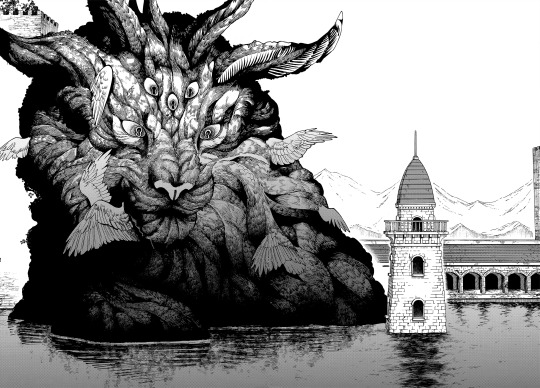
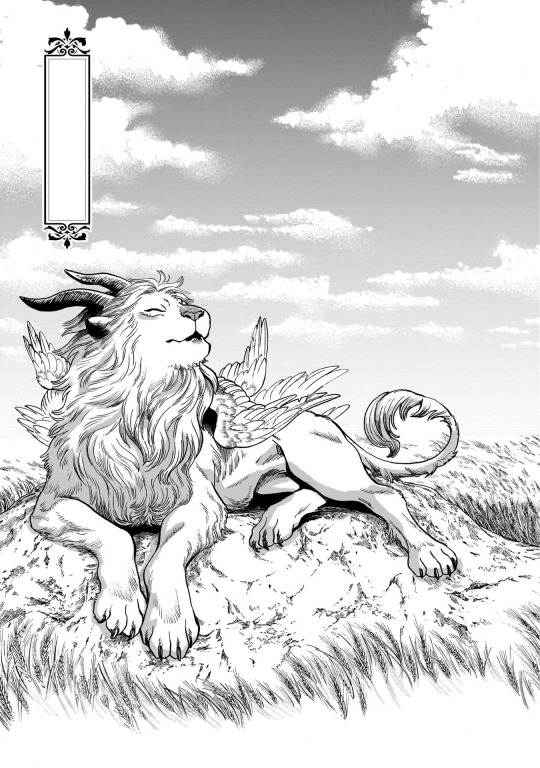
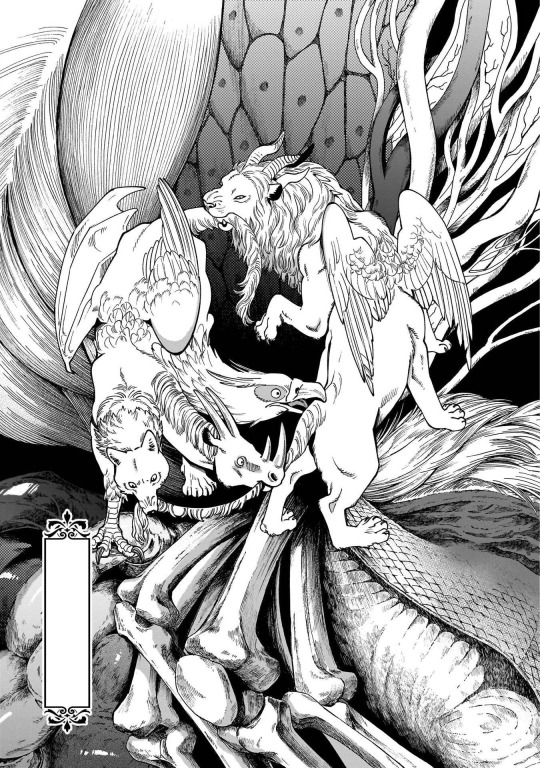
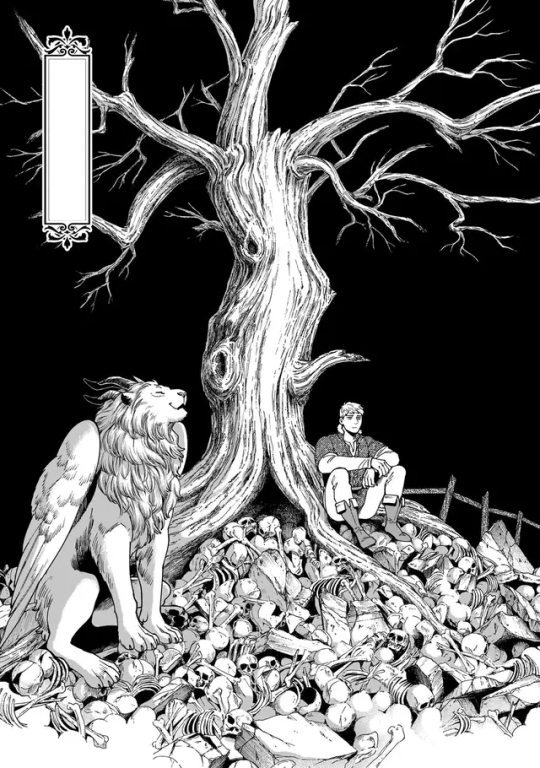
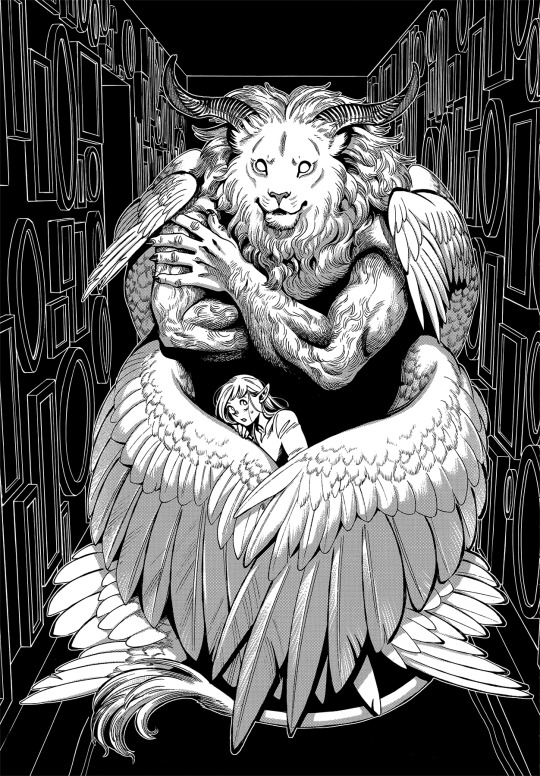

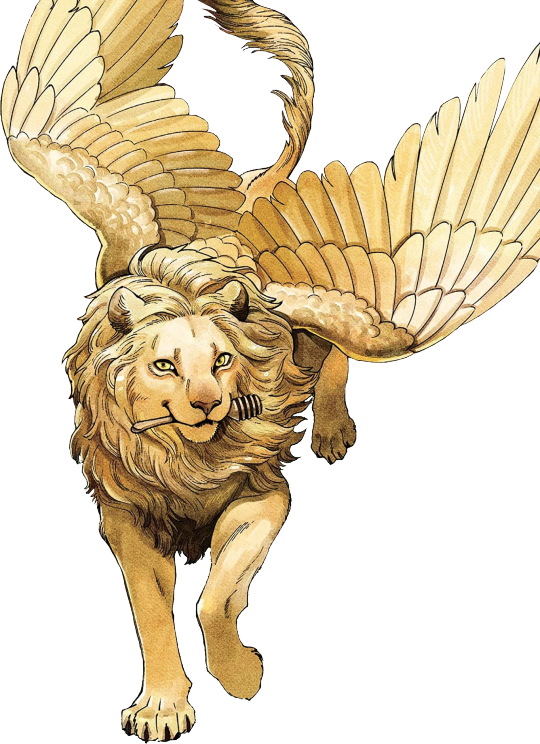
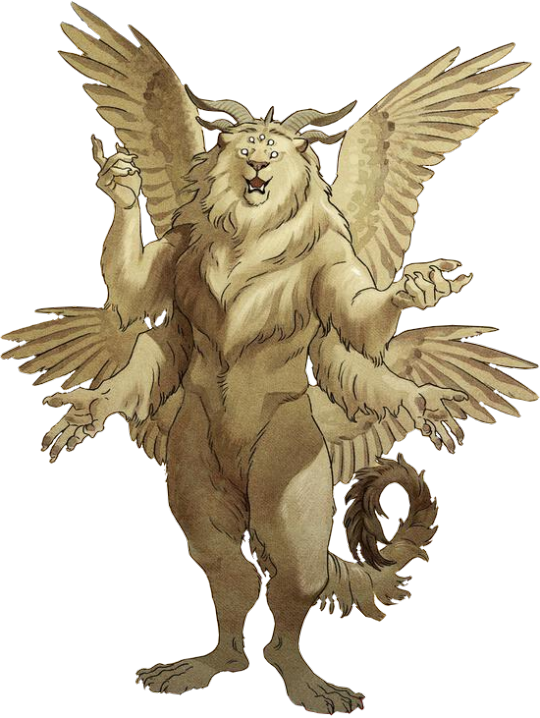
ᛗᚴ ᚺᚣᛗᛊ ᛨᛢ ƂᏌᛊᏒ
#raw#let's take ibuprofen together#winged lion#dungeon meshi#delicious in dungeon#marcille dungeon meshi#goetic demons the aesthetic#🦁♌#manga art
3K notes
·
View notes
Text
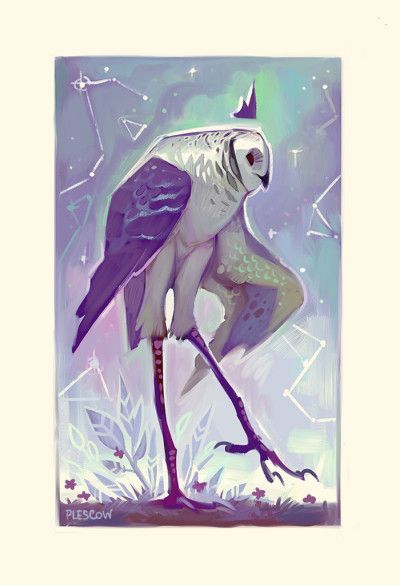
#stolas#prince stolas#real prince stolas#ars goetia#goetia#goetic#goetic demon#demon prince#owl demon#demonolatry#demonology#baby demonolator#demonolator#demonologist
50 notes
·
View notes
Text

5 notes
·
View notes
Note
hey there, would you mind telling me a bit about Lilith and your practice with her? I’ve been trying to do some research on her modern worship, offerings, and signs, but it can be really difficult to find anything that’s serious when there are so many references to her in pop culture :/
Okay so Lilith is extremely, and I mean extremely complicated.
Contrary to popular belief, “Lucifer” isn’t actually a name, but a title. The name Lucifer means “light bringer” in reference to Venus as she appears in the morning, but any “light bringer” can be considered a Lucifer. Prometheus for example, the man who stole fire from the Gods to give light to humanity, is a Lucifer. And so, there are actually many different entities that have taken the role of a Lucifer throughout history and in various different retellings. Eosphorus is the name of the deity that was revered by the Greeks as Venus, but Lucifer is a title that many different figures have taken on depending on the context.
Why do I bring up Lucifer? Because he and Lilith are very similar in that regard. Our earliest mentions of Lilith throughout history paint her not as an individual but as a species of night demon that frequently takes the form of an owl, she was known to bring crib death and miscarriage.
In the myth, Inanna and the Huluppu tree, a huluppu tree (a type of willow) is planted by the banks of the Euphrates River. The tree is tended and nurtured by the goddess Inanna, who plans to use its wood to craft a throne and a bed for herself. However, as the tree grows, it becomes infested with three troublesome creatures:
A serpent that makes its home at the roots of the tree. (What troublesome serpents have been portrayed in another mythology having to do with magical trees? HMM!)
The Anzu bird (sometimes described as a mythical lion-headed eagle) that builds its nest in the branches.
The Lilitu (a female demon or spirit) that makes her lair in the trunk.
Inanna, distressed by these creatures occupying her tree, calls for help from her brother, the sun god Utu (or Shamash). When Utu does not assist her, she turns to the hero Gilgamesh. Gilgamesh comes to her aid and, with his great strength, drives away the serpent, the Anzu bird, and the Lilitu. He uproots the huluppu tree and uses its wood to craft a throne and a bed for Inanna, fulfilling her original intention. Consider that it is a human, not the God of the sun, who helps Inanna with this problem. Interesting.
The inclusion of these three very specific creatures occupying this important tree tended to by the Goddess of love, to her dismay, are very important. Especially when he consider how Inanna’s visual depictions have been syncretized with Lilith. The idea of a serpent (perhaps a Lucifer) , an Anzu bird (described quite similarly to some depictions of abrahamic angels, specifically those like the cherubim) and a Lilith being “driven away” from this mythical tree are notable, especially because these are all symbols associated with Inanna herself.
Inanna, one of the most complex deities in Mesopotamian mythology, embodies aspects of fertility, love, war, and the underworld. Inanna's association with snakes can be seen in her connection to the underworld and her transformative journeys. In her descent into the underworld, Inanna removes one magical garment as she continues into the deathly realm. Just as the snake sheds its skin, Inanna sheds her power and identity as she descends, only to be reborn and restored.
Inanna is frequently depicted with wings, highlighting her divine nature and authority. The Anzu bird in the Huluppu Tree myth, while initially a source of trouble, also connects to the theme of overcoming chaos, which aligns with Inanna's role as a powerful deity who brings order.
Lilith, often depicted as a demoness, represents untamed feminine power, independence, and sometimes chaos. In later Jewish mythology, she is considered a night demon, but her roots trace back to earlier Mesopotamian beliefs. Her inclusion in Jewish mythology is summed up in the verse Isaiah 34:14: "Wildcats shall meet with hyenas, goat-demons shall call to each other; there too Lilith shall repose, and find a place to rest." (Hm… I wonder WHERE she will find a place to rest? Perhaps in a… magical tree?)
In Jewish mysticism, the feminine side of the tree of life is what creates the potential for evil. Even though it is the lightest, brightest, goodest form of feminine energy, for some reason, every time, disobedience pops up no matter what we do. It is an aspect of the feminine itself.
In the Huluppu Tree myth, Lilith (or a Lilitu) makes her home in the tree that Inanna nurtures. This connection reflects Inanna's association with both nurturing and taming wild, untamed aspects of the feminine. Lilith's presence in the tree also highlights the tension between order and chaos, which Inanna must navigate and control.
So what does this all mean?
Each creature in the tree draw direct parallels to the Goddess of Love herself. These can be interpreted as perversions of her divine nature, that she herself cannot be-rid of on her own. Inanna the Goddess of WAR couldn’t get an owl, a big bird, and a snake out of a tree??? Why? Likewise, why did the divinities refuse to help her? Why did she have to seek out a human specifically, to get those unwelcome guests out of her tree? And if it is so that Inanna just doesn’t really like owls and snakes, why is she represented with them (and generally just hanging out with them) so often?
Lilith, the serpent, and the Anzu bird reflect aspects of the divine mother that she herself cannot even tame. Lilith as the night owl also reflects an aspect of knowledge and wisdom, as owls can see in the dark and hunt strategically. Even though she is portrayed as an enemy of Inanna, Inanna never once can or even tries to harm her. Inanna being the Goddess of fertility, and Lilith being the demon that causes miscarriage, show that they are natural opposites, yet still derived from the same divine source, and never combative towards each other.
Similarly, Lucifer’s first ever depiction was as his role as Venus, the same astrological planet as what is associated with Inanna. In Christianity, Lucifer played the role of the serpent who convinced Eve, another archetype of divine femininity, to eat the forbidden fruit of knowledge. Interestingly enough, Lilith is never actually portrayed eating the fruit. Does she posses a divine knowledge that is inherent to her qualities as a night owl, to the point where she didn’t need to eat the fruit to have the wisdom to disobey Adam? Does she possess a knowledge that is inherent to the divine feminine force from which she was created? Is this because she was created from the divine forces of femininity itself and not derived from man, as Eve was? If this is the case, that even though Eve ate the apple, she did not become a Lilith, that stands to imply that there is an inherent quality about being derived from a human man, that repels or deflects that inherent feminine rebellious quality. Instead, being replaced with the the ability to submit.
Knowledge applied with the associations of night and mystery, create a feminine energy that cannot submit, and this is likely Inanna’s fault herself, as she very notably has a big issue with respecting any authority higher than herself, even death herself (as her big sister)
From a symbolic standpoint this tells us a couple things about Venusian energy in general.
1.) Regardless of how hard it tries to behave, it is inherently chaotic
2.) It has many faces, some of which do not jive with eachother, but even so, they continue to coexist, even if not in the same places
3.) It is a creator and a destroyer.
4.) It has a very rough time with the concept of submission.
Okay YAP fest, what’s the point?
Lilith is a great example of how the dark feminine exists within the light feminine as an inevitability. Lilith is not so much associated with war, the strategic enactment of violence., but rather the inherent unpredictability of femininity. Women both create life and snuff it, women can decide to procreate or to have an abortion. Lamashtu and Lilith respectively were invoked for abortive purposes.
And of course, Lilith’s adoption by feminist spaces as a self actualized protector of individuality and feminine rage also invoke heavy associations with Inanna as the Goddess of war. So in my interpretation, Lilith is that part of Inanna that went a little unchecked for a little too long. That combined with the themes of Lucifer’s liberation, paint a very interesting narrative about how femininity as a divine force shows up in obscure ways, perhaps even negative ways, whilst still being just as divine and inherent. To recognize Lilith as the antithesis of all of these things, is to see her as the unwavering aspect of femininity that cannot be tamed, even by femininity herself. The snake, the reborn, will always cause chaos at the root of the feminine energy. The Anzu bird, the angels, are susceptible to that same corruption. And the Lilith herself will always find a home within that feminine energy, unless of course, she is snuffed by the will of a man who doesn’t respect her. Still, she does not die, just searches for another place to rest.
Wow this was really long. SO. Lilith is the entity that embodies our biggest fears about femininity and the inherent knowledge that women posses. Women know how to create life, and women have the ultimate authority in ending it. To honour Lilith as a Goddess rather than a troublesome demon, is to recognize that even the parts of femininity that femininity herself can’t control are divine in nature. The knowledge that she possesses makes women incapable of submission. And the Gods themselves are aware of this, and do not interfere with her, because she is a Goddess herself carrying out an important function, even if it doesn’t adhere to what they might like. Basically, rebellion is an inevitability to any feminine creature that possesses knowledge. It is unavoidable.
It’s incredibly difficult to find anything about the worship of Lilith because for a long time she wasn’t given her flowers as a divinity. Even Inanna herself tried to get her to fuck off. You can honour her quite similarly to the way Artemis and Athena were worshipped, alongside Inanna or Aphrodite of course. As the dark, mysterious, yet inexplicably wise mother of demons, she is the creative force behind destruction. She’s the aspect that exists in all of these Goddesses, that most of us would rather not think about. She is a woman who cannot be held in captivity, if you tell her to procreate, she will cause miscarriage. If you tell her to obey, she will become even more rebellious. The more you repress her, the stronger she becomes. No matter how oppressed women become, no matter how subservient, so long as they have any connection to the divine feminine, they will have a Lilith inside of them.
Lilith’s representation of a succubus expands upon her associations as a woman who does what women do, (men thought women were sex objects for a long time) but not for the sake of cooperation, but for her own means. Lilith is very much a woman, capable of doing what all women and feminine goddesses can do. She simply chooses not to, similarly to how Artemis simply chooses not to procreate. The element of choice, (hello again, Lucifer) always being an option to women is, from a patriarchal standpoint, really scary for men.
So how do you worship her? Worshipping Lilith, like Lucifer, is technically paradoxical. Lucifer wants us to worship ourselves. If he accepts worship it’s because you’re using him as a metaphor for yourself. Lucifer believes in no man submitting to no God, so he won’t take on the role of the usual “authority”. Lilith is quite similar, to worship her is to worship the wise and rebellious spirit that exists in the feminine- yourself. Self honouring acts honour Lilith, just as they honour Lucifer. It’s important to remember that Lilith isn’t just rebellion for the sake of arguing, she isn’t a contrarian. She is self actualization that just happens to not go with the status quo. She does what she wants, if that pisses you off: cope. She’s not inherently against men or procreation, or even women who are submissive. She is the constant exception. The random variable that always pops up whenever we deal with feminine deities. So for me, I honour her as an extension. of every existing goddess. Within Inanna, there is a Lilith, as there is within Aphrodite, Hera, Artemis, Athena, etc etc.
Wow this was long as fuck but I hope it provided a little bit of insight as to why Lilith is so fucking confusing. Regardless of which contexts you feel are the most true, Lilith, like all deities will continue to evolve with time. Just as the narrative around Medusa has gradually changed into her being a victim instead of a monster, Lilith has shifted from being a demon that just kills babies to the ultimate personification of feminine independence. All of these interpretations are correct in the right context, you just have to figure out which context best applies to you.
OKAY if you actually read this far here’s a flower 🌹
#lilith#lilith deity#witchcraft#magick#paganism#pagan#occultism#witch community#witch aesthetic#witchblr#demonology#grimoire#lucifer#inanna#luciferian#goetic demons#goetia#mythology#syncretism
74 notes
·
View notes
Photo
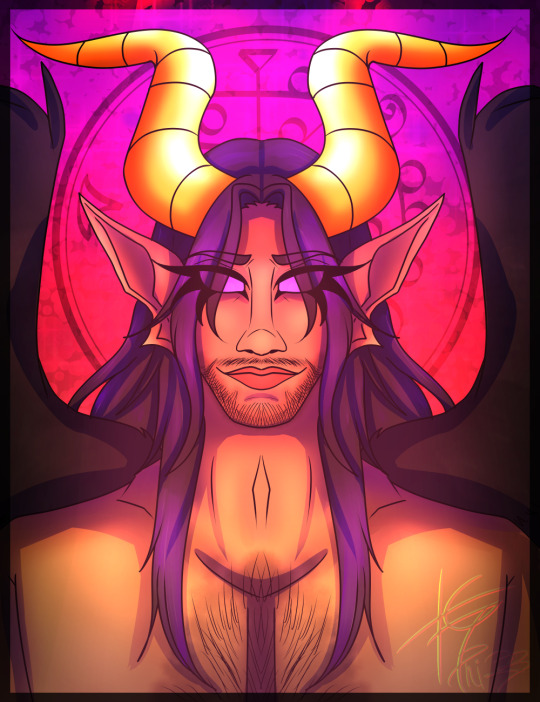
Hail to Asmodeus! The King adorned in Violet and Gold!
Ayer Avage Aloren Asmoday Aken!
Hail to the King of Passion!
14 notes
·
View notes
Text
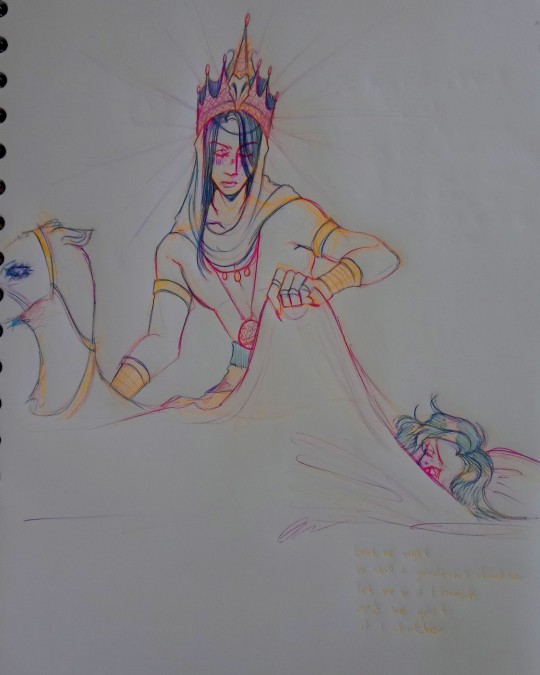
Art for King Paimon 💖
#left hand path#luciferianism#luciferianist#theistic luciferianism#demonolatry#king paimon#ars goetia#goetic demons
156 notes
·
View notes